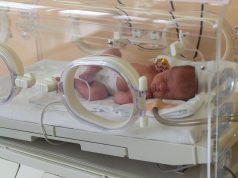Increased risk for child developmental delays also seen with prenatal exposure to PM2.5, ozone
TUESDAY, April 9, 2019 (HealthDay News) — Proximity to major roadways and prenatal/early life exposure to particulate matter <2.5 µm (PM2.5) and ozone (O3) are associated with childhood developmental delays, according to a study published online April 9 in Environmental Research.
Sandie Ha, Ph.D., M.P.H., from the University of California in Merced, and colleagues examined whether proximity to major roadways or exposures to air pollution are associated with child developmental delays in a prospective cohort study involving 4,089 singletons and 1,016 twins born between 2008 and 2010. Child development was reported using the Ages and Stages Questionnaire.
The researchers found that those residing 50 to 100 m and 100 to 500 m away from a major roadway had increased odds of failing the communication domain compared with those residing >1,000 m away (relative risks, 2.12 and 2.07, respectively). Weak but significant associations were seen between prenatal exposures to both PM2.5 and O3 and failing any developmental domain; effects ranged from 1.6 to 2.7 percent for a 10 µg/m³ increase in PM2.5 and from 0.7 to 1.7 percent for a 10 parts-per-billion increase in ozone. There was a positive correlation for average daily postnatal ozone exposure with failing overall screening by 8, 12, and 30 months (3.3, 17.7, and 7.6 percent, respectively).
“Air pollution and roadway emissions are potentially modifiable risks for developmental delay and our findings suggest that these associations are present even at levels of exposure below current regulatory standards,” the authors write.
Copyright © 2019 HealthDay. All rights reserved.








